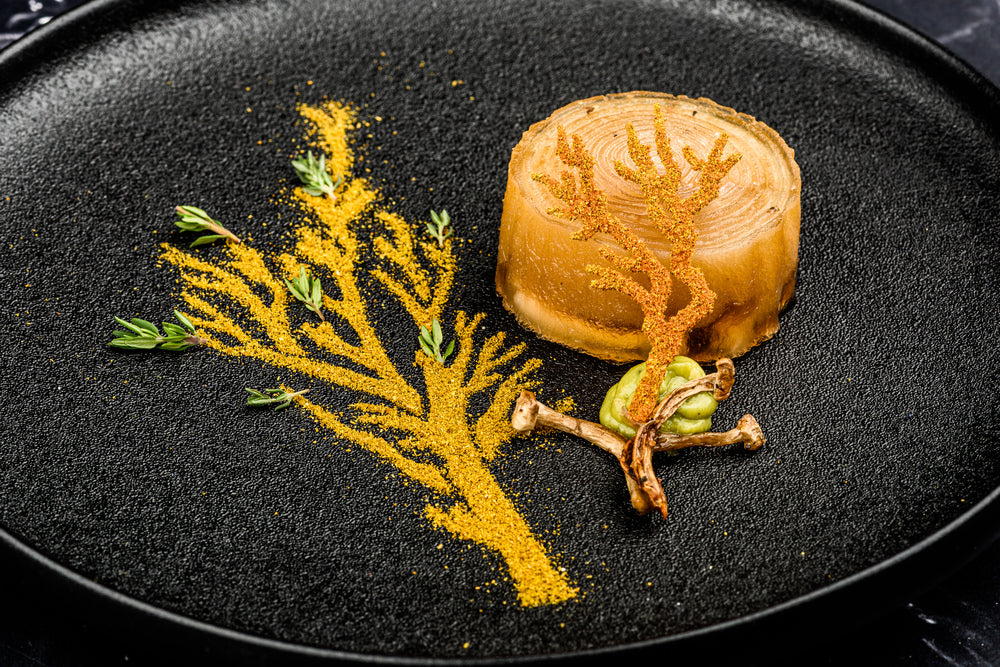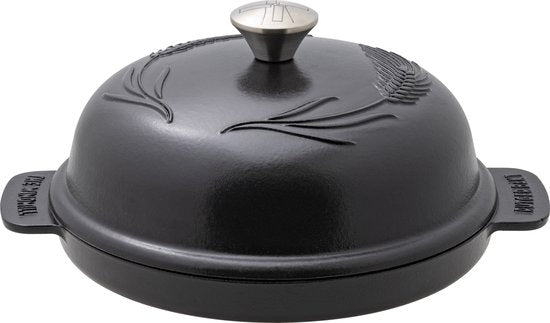
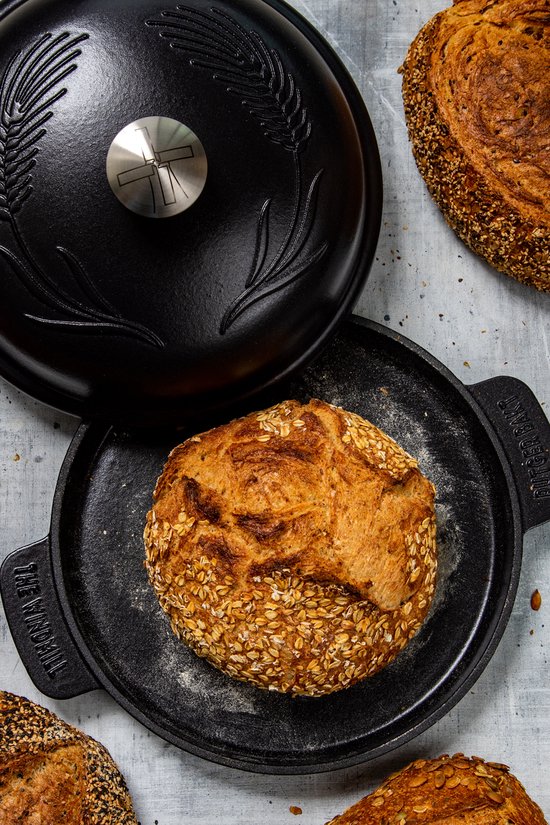
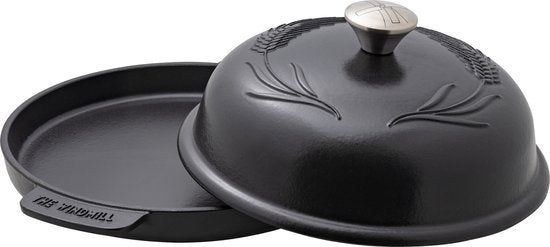
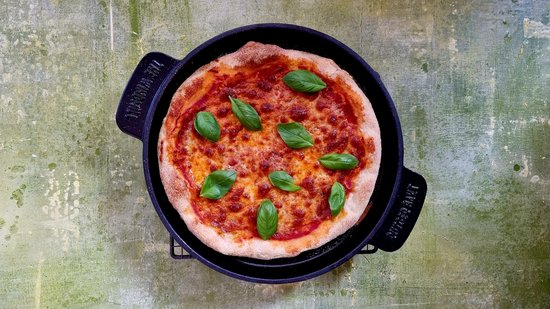
The Windmill enamelled cast iron bread baking bowl - bread cloche
Enameled cast iron ball with integrated handles, stainless steel knob and flat bottom, specially developed in collaboration with Rutger Bakt for baking bread.
Weight 8KG
Diameter 30CM
You can also use the base as a pizza plate or grill plancha
Few things beat freshly baked bread. With the help of the bread baking ball you can bake the most delicious bread at home in your oven! The unique design of the bread baking ball ensures that steam is created during baking, which allows the bread to rise properly and gives it a nice crispy crust.
But why is that steam so important? In a bakery, as soon as the bread dough goes into the oven, some steam is added. The steam creates a thin layer of water on the dough, which delays the crust formation of the bread. This allows the bread to rise properly during the first part of the baking time. Halfway through the baking time the steam has disappeared, the bread has then risen well and can then be baked further until it is crispy and golden brown. The bread baking ball imitates this process and gives you the ideal bread baking oven for your home.
Enamelled
The bread baking ball is made of enameled cast iron. Cast iron retains heat for a long time and ensures good heat transfer to the bread dough. Because the bread baking ball is enameled, it is water-resistant, rust-free, easy to clean and the dough is less likely to stick. Traditionally, bread was baked in a cast iron pan, the Dutch Oven, where the pan was used as an oven. The bread baking ball uses the properties and benefits of cast iron, but lets the oven do the work. The sturdy stainless steel lid knob ensures that you can easily grip the lid of the bread baking ball yourself with oven mitts. With the integrated handles you can easily move the entire bread baking ball.
Baking bread
To bake bread, use both the base and the lid together in the oven. How do you use the bread baking ball? Place the oven rack low in the oven and place the bread baking ball (both the base and the lid) on the rack. Preheat the oven with the bread baking ball to 240 °C for at least 30 minutes. Use oven gloves to remove the lid from the bun, slide the bread onto the base plate and place the lid back on. Reduce the oven temperature to 220-230 °C and let the bread bake for about 20 minutes. Remove the lid with an oven mitt and bake the bread for 15-25 minutes until golden brown and crispy. Let the bread cool on a rack.
Also perfect for pizza, quiche, flatbread and much more!
In addition to the tastiest bread, you can also use the bread baking ball for pizzas, quiches, savory pies, flatbreads and much more. Then use the bulb without the lid.
The bread baking ball was developed in collaboration with Rutger Bakt. On www.rutgerbakt.nl/broodbakbol contains a collection of bread recipes, explanations about how to use this bread pan and even more tasty inspiration for the bread baking ball. The bread baking ball is also suitable for baking bread in a gas barbecue with a lid, kamado or other closed barbecue.
The bread roll on the barbecue
For the ultimate outdoor chef, nothing beats smoking and cooking in the open air. We all like a fresh sandwich. Now you can bake the tastiest bread at home, which is just as beautifully risen and crispy as the bread from the bakery. With the help of your trusty Q, you can also make the tastiest breads, quiches, pizzas and flatbreads from your own garden. Or better yet, from your lounger while the barbecue does the work. How do you work? We'll explain that to you!
Baking bread
To bake bread, just like with an oven, you need top and bottom heat and it is important that a temperature of 240°C can be achieved. A barbecue with a lid, such as a Kamado or kettle barbecue, is therefore essential. It is important that the temperature remains stable and you also want to use indirect heat so that your bread can cook evenly and does not burn. A heat shield in your barbecue ensures this even distribution of heat. It is also called a plate setter, conveggtor or heat deflector. Do you not have a heat shield with your barbecue, but you do have a lid? Then you can place the coals strategically. For example, place them along the outer edge of your BBQ or, if your barbecue is large enough, place them on the left and right sides of the barbecue so that they are not directly under the bread baking ball. Make sure your air regulator is open so that all flue gases can escape.
Preheat
This also applies to use in the barbecue; preheat the cast iron! If the heat is already in the cast iron, it is immediately transferred to the dough and you get a much nicer, crispier baking result. And that's what we're going for!
Bake it!
The actual baking is no different from using it in the oven. So you can follow the steps in the desired recipe. Depending on the type of bread you want to make, you can use the bread baking ball with or without a lid.
The enamelled bread baking ball does not need to be fired, ensures that the dough does not stick and is optimally protected against rust. So maintenance is a breeze!
Choose options





